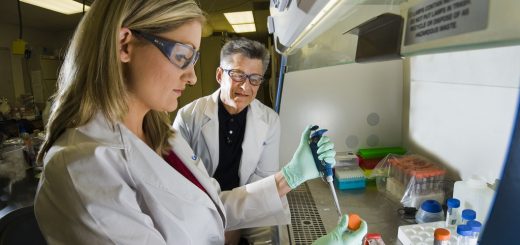Big Investment in Science of the Small

Since the advent of the 21st century, more and more industries have had to adapt and develop at breakneck speed in order to keep up with the demands of our modern world. The science industry is no different, with new technologies requiring ever more advanced research centres. Recently it has been announced that one of four brand new hubs for quantum imaging is to be based right here in Glasgow, with Strathclyde University at the forefront of the research.
The idea behind quantum imaging is that scientists use certain features of quantum particles to create images with a resolution which otherwise wouldn’t be possible from our older methods. The hub itself is to be used by a total of 6 different universities including the likes of Glasgow University, Edinburgh University and Herriot-Watt University, though of the 6 universities involved, Strathclyde remains the only one involved in all four newly developed hubs.
The task of creating these new techniques being undertaken in these hubs has been described as a “world class” opportunity by Professor Sir Jim McDonald, principal of the University of Strathclyde, and aims to advance pre-existing technologies to be used within a wide range of field and environments, from tracking magma underneath volcanoes to monitoring oil reserves. As you would expect, such applications are as important as they are unique, especially with oil seemingly becoming more and more like gold dust.
Each university will be focusing on different techniques and applications: Herriot-Watt will be researching a new advancement in cameras which use advanced photon timing techniques to detect objects around corners – a device any military would dream of. Glasgow University will be using cheap, single-pixel sensors to build highly affordable and effective ultraviolet/infrared images. Strathclyde isn’t new to working in conjunction with others in the realm of quantum physics. They have recently been named one of five Scottish physics departments to work with five Max Planck Institutes in Germany being funded by £10Million over five years to conduct research at the forefront of quantum technology, in the first collaboration of its kind, proving Scotland is very much at the forefront of fundamental physics research.
The research itself has been split up into four different areas. The first and primarily funded area is sensing and metrology being led by the University of Birmingham, which is set to receive £4.7M in order to develop new, highly advanced technology. For those unfamiliar with the term “metrology”, metrology is the science of measurement, i.e. how precise and accurate can we be in detailing
quantities such as lengths, speeds etc., which are fundamental when dealing with objects in the quantum world. Combining both of these is naturally vital as quantum particles tend to move at speeds we can barely fathom and as such are difficult to pin point, forcing us to implement new and improved ways of finding them and reading accurate data from them.
In reality, there is only so much that can be done when detecting both the speed and location of these tiny particles due to a concept known as the Heisenberg Uncertainty Principle. Many will no doubt recognise the name Heisenberg from the famous television show “Breaking Bad”. However, the original was most certainly real and even more intelligent! He theorised that one can never know the exact position and the exact speed of a particle at the same time since the more accurately we measure the location, the less accurately we measure the speed and vice versa.
This is just one of the areas these collaborations hope to improve. The role of Strathclyde scientists here will be contributing to the design and enhancement of compact atomic clocks, magnetometers, rotation sensors and custom semiconductor disk lasers. Other areas of research quantum communications where CNQO (Computational Nonlinear & Quantum Optics) group member John Jeffers will be awarded money to develop schemes for quantum digital signatures and quantum amplifiers, quantum enhanced imaging where John Jeffers, Alison Yao and Gian-Luca Oppo will deal with the theoretical and computational modelling of devices such as next generation cameras and microscopes.
Finally, there’s networked quantum information technologies which will see Michael Dawson of the Institute of Photonics work with Oxford to research the micro-fabrication (the building of metal structures on the order of micrometers) of optical structures in diamond.
The UK National Quantum Technologies Programme is working on ensuring these new and innovative technologies make a successful transition from laboratories to industry which will see us once again eclipse our current technology in both size and capability, with Strathclyde and Scotland very much on the frontier of these developments.
Specialist edited by Jennier Hamilton.










